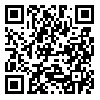Semi-Annual
Back to the articles list |
Back to browse issues page
1- Faculty of Fine Arts, Atatürk University, Erzurum, Turkey , m.mohammadzadeh@tabriziau.ac.ir
2- Department of Iranian Painting, Faculty of Visual Arts, Tabriz Islamic Art University, Tabriz, Iran
2- Department of Iranian Painting, Faculty of Visual Arts, Tabriz Islamic Art University, Tabriz, Iran
Abstract: (776 Views)
The Halkari technique is a refined art form used in the decoration of illuminated manuscripts and rare books. It flourished during various historical periods, particularly in the Safavid era. This study focuses on the 1558 Quran manuscript housed in the Chester Beatty Museum, analyzing its Halkari decorations to explore the evolution of this technique during the Safavid period. Using a library-based, descriptive-analytical approach, the research examines Halkari works from the Safavid Shiraz school, with the 1558 Quran selected as a case study due to its documented origins and the signature of a renowned Shirazi artist. This manuscript exemplifies the sophistication of Halkari, featuring harmonious designs applied to the text and margins with Eslimi and khatai motifs. The balanced use of gold, azure, white, black, and crimson colors, combined with precise symmetry, reflects the unique aesthetics of the Safavid period. The study reveals that Halkari played a prominent role in Safavid illumination art, creating visually stunning and symmetrical compositions. The 1558 Quran stands as a testament to the artistic innovation and enduring traditions of the Shiraz school, highlighting the transformative yet continuous nature of Safavid art.
Send email to the article author
| Rights and permissions | |
 |
This work is licensed under a Creative Commons Attribution-NonCommercial 4.0 International License. |






 tabriziau.ac.ir
tabriziau.ac.ir